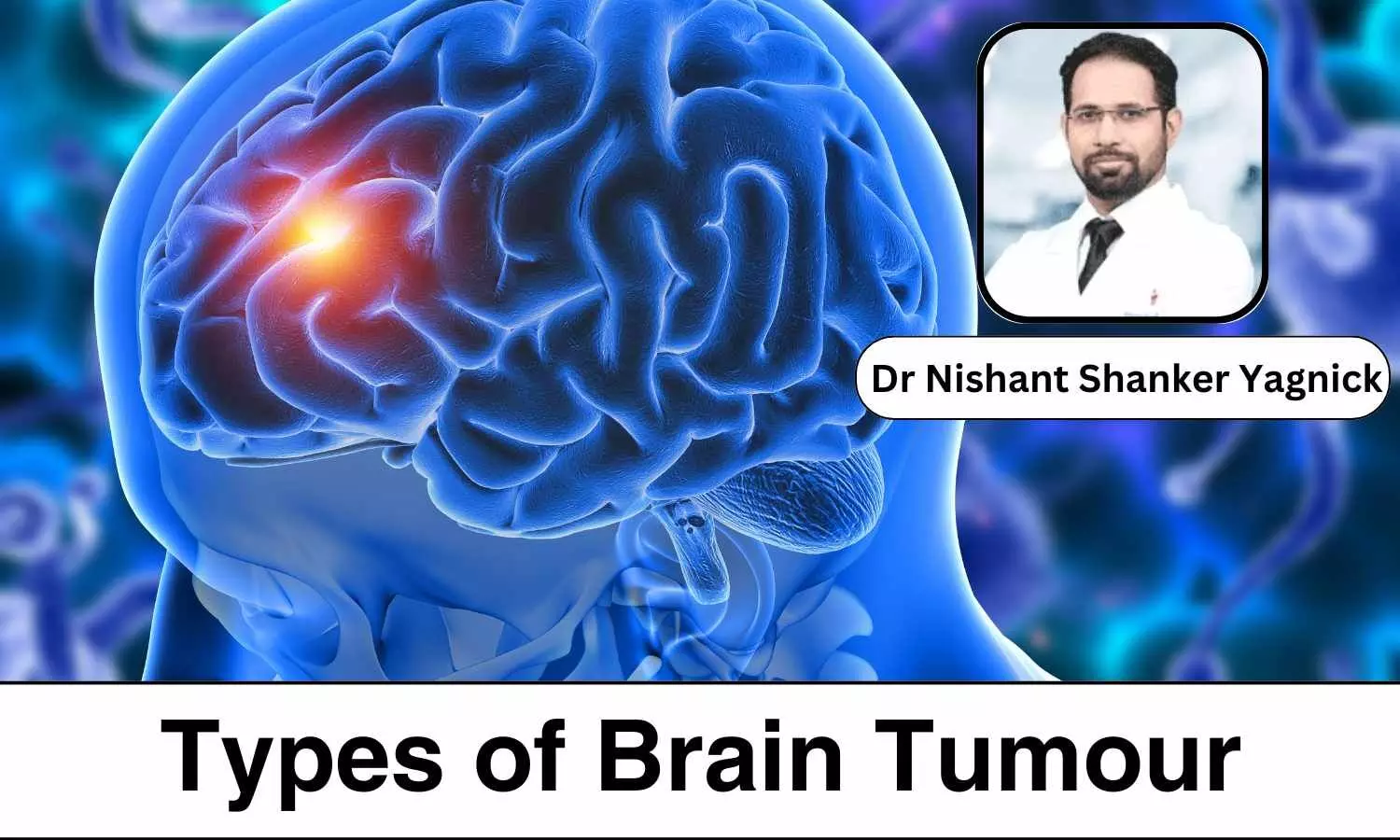World Brain Tumour Day 2024: What are the different types of Brain Tumour? - Dr Nishant Shanker Yagnick

A brain tumour is a group of damaged brain cells that form in or near your brain. They multiply without any control, as the normal cell function controlling the growth is not present. Brain tumour might start in your brain (the primary tumour), or they can form through the cells travelling from other affected parts of the body.
The treatment of a brain tumour varies depending on the size, type, and location of the tumour. Even there is a difference between outcomes between two people suffering from the same type of brain tumour. There are approximately 150 brain tumour presents, and they are categorised by the type of cell they are made up of, how they act, and their characteristics.
Here are a few of the most common types of brain tumour, often found in the general population:
Benign Brain Tumour
People often think that all brain tumours are cancerous, which is not true. Benign tumour are non-cancerous tumour, and they tend to grow slowly and possess less risk. Of all the brain tumour present, benign brain tumour account for about. These tumours are a mass of non-cancerous cells that grow inside your brain. They grow slowly and rarely spread outside your brain.
A benign brain tumour causes minor symptoms, and it is often recommended by doctors to get it removed for long-term benefits. People suffering from benign brain tumour need lifelong monitoring. Regular testing is required to keep a check on the condition of the patient.
Malignant Brain Tumour
Malignant brain tumour originate from cancer cells. They have rapid growth and spread to the surrounding tissue. These tumours extend their invading of the surrounding healthy brain tissue, but they can also remain contained (encapsulated).
When malignant brain tumour form or extend to areas of the brain that take care of important bodily functions, they interfere with normal behaviour and become life-threatening. These are aggressive tumour and can become dangerous quickly as they are to multiply so fast.
Symptoms
Brain tumour symptoms vary based on size, type, and location. Symptoms occur due to sudden changes or when they start affecting healthy tissue in the brain. The following symptoms commonly occur with many types of brain tumour:
- Frequent headaches
- Seizures
- Nausea or vomiting
- Problems swallowing or controlling facial muscles
- Dizziness
- Changes in the ability to hear
What does it feel like?
Brain tumour feel different for everyone, but they can produce the following sensations:
Seizures: Seizures are like the first sign of a brain tumour. Since it affects one part of your brain, you might experience physical changes in the area affected by the seizure. A brain tumour is more likely to be a focal, or partial, seizure. This can cause the feeling of being absent from surroundings, intense emotions, hallucinations, stiffness of muscles, numbness, tingling, or a burning sensation.
Headache: This type of headache feels like a dull, persistent pressure. It might happen with nausea or vomiting. Your pain may worsen when you beg, have a bowel movement, or lie down.
Secondary brain tumour can be easily traced to the organ from where they started, but primary brain tumour can’t be linked to specific causes.
Ways in which brain tumour can be diagnosed:
For an accurate diagnosis, you should visit a healthcare provider. He will likely start a physical exam and check for general signs of disease. A history of your health and your family’s health also takes place.
Neurological Exam: It is a painless exam and includes a series of tests and questions to check for the normal function of the brain. The exam checks many aspects of neurological health and cognitive abilities, including alertness, sensory function, walking and coordination, balance, and muscle strength.
Imaging tests: These are used to determine the size and location of the tumour. This also helps in determining the right treatment and expected outcomes. The following imaging tests are used to diagnose brain tumour:
- Magnetic resonance imaging (MRI)
- Computed tomography (CT) scan
- Positron-emission tomography (PET) scan
Biopsy: It is used to confirm the type of tumour present after the confirmation. In the procedure, a small piece of tumour tissue is removed, and then it is analysed by a pathologist who conducts different tests on it and defines the type of brain tumour.
Understanding the Treatment Options:
Treatment varies depending on the type of brain tumour and its location in the brain. Treatment usually includes radiation, chemotherapy, and surgery.
Surgery: It is the first treatment that is advised for brain tumours. It is recommended to completely or nearly complete the removal of the tumour. Even if a complete removal is not possible, surgery can provide the following benefits:
- Reduce the size of the tumour to be treated by radiation or chemotherapy.
- Relieve symptoms like seizures.
- Prevent progression
- Maintain neurological function.
- Help in determining appropriate treatment
Other Therapies
Radiation therapy: It targets high-energy-induced particles towards brain tumours. It kills or shrinks brain tumour cells. It can be used as a first-line treatment or to treat tumour that return after initial treatment.
Chemotherapy: It is like a systematic therapy that circulates through the bloodstream. It interferes with the growth of tumours.


